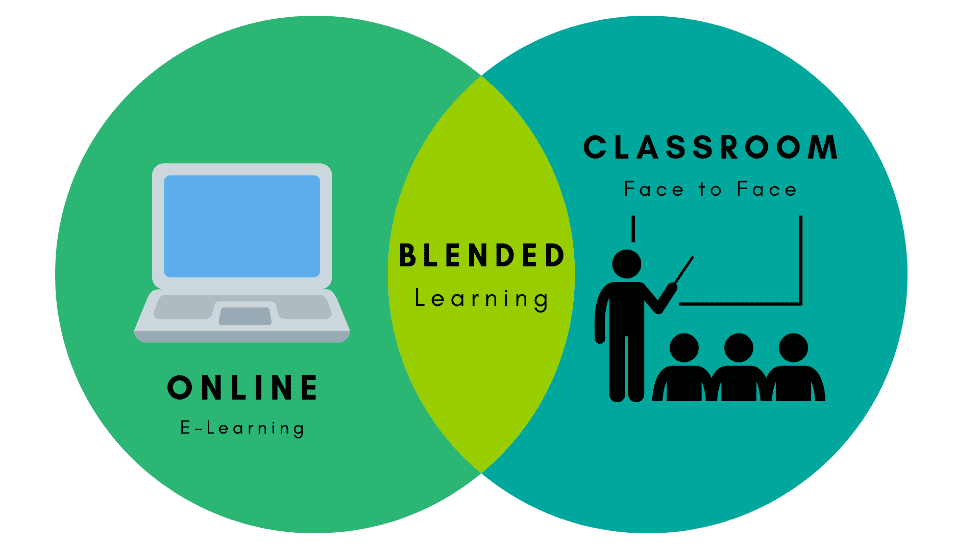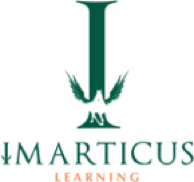Educational Technology or EdTech as it is commonly referred to, is one of the hottest trends in the market today. Starting from startups like Udemy and Coursera to individuals starting their own courses on sharing the knowledge they have gathered over the years, almost everyone is directly invested or affected by the growth in this space.
As a corporation, there will be times when you need to invest in courses and curriculum to upskill your present workforce and then you will be faced with the choice of either going completely offline, completely online or using a mix of both, which is referred to as blended learning.
What Is Blended Learning?
In the simplest of terms, blended learning can be defined as a combination of online and offline learning, thus offering the best of both worlds.
For example, you choose to upskill your employees with the latest course in Digital Marketing. They take a few classes offline and then make up for the rest in terms of homework and assignments online. In this way, their investment of time is taken into account and research has shown that this method of imparting education especially in working professionals is more impactful.
Advantages of Blended Learning
Blended learning comes with a lot of advantages when compared with other means such as online or offline. Mentioned below are some of the most significant ones.
Benefits for Patrons
- One of the most significant advantages of blended learning for patrons is the amount of flexibility and freedom it offers. Not only does the patrons have a greater amount of scheduling flexibility when it is needed, but also the freedom to learn remotely and at their own pace.
- Recent research conducted on students taking various forms of eLearning (online, offline and blended) reported that blended learning students have a more comprehensive understanding of the course content and thus tend to learn better in comparison to their peers.
- One of the most crucial gaps in online learning is the absence of interaction between students and their peers. Research has shown that in most cases interactions between peers and instructors lead to better retention of the course material. Since blended learning offers the best of both worlds, social learning is favored among all the pupils.
Benefits for Businesses
- One of the most significant advantages of undertaking blended learning from a company’s perspective is the reduction in the overall cost. Expenses such as those of face to face interactions, traveling costs, accommodation and even printed transcripts and course material are severely reduced, thus leading to more profits.
- In blended learning, companies have the leeway to make use of several different delivery methods for the content, which can be in the form of gamification and webinars, both of which are proven to increase efficiency of course delivery by instructors and also better retention among students.
- In lieu of the points mentioned above, blended learning is a more effective and efficient way of upskilling your workforce meaning which your company will see a greater return on investment much faster.
- Another advantage of blended learning is the easy accessibility of tracking all the pupil's progress effectively so that you have a grasp on the progress of your employees. In a situation, if you find that one of your employees is falling behind, you can figure out new means of encouraging them, so that the whole batch learns in sync.
Mistakes to Avoid
Now that you know all about the benefits of blended learning, we are sure that you are immensely excited to try them out, but before you go ahead with your plan, mentioned below are some mistakes you need to avoid.
- Make sure that the LMS platform meets your exact requirements. Understand what each LMS is capable of and accordingly make an informed decision on which one to choose.
- Before you instruct your employees to finish the remaining course content online, analyze their progress offline. In a few instances, some employees might fall behind and thus it is important to analyze and understand their progress and make amendments to the course material before you proceed.
Conclusion
Blended learning is one of the latest additions in the world of EdTech and companies who have invested in it so far have reported significant results. Now that you know what it means and are aware of its benefits, go ahead and make an informed decision if this is best suited to meet your unique requirements.
To know more about this, feel free to visit: https://www.linkedin.com/showcase/contact-imarticus-learning/









